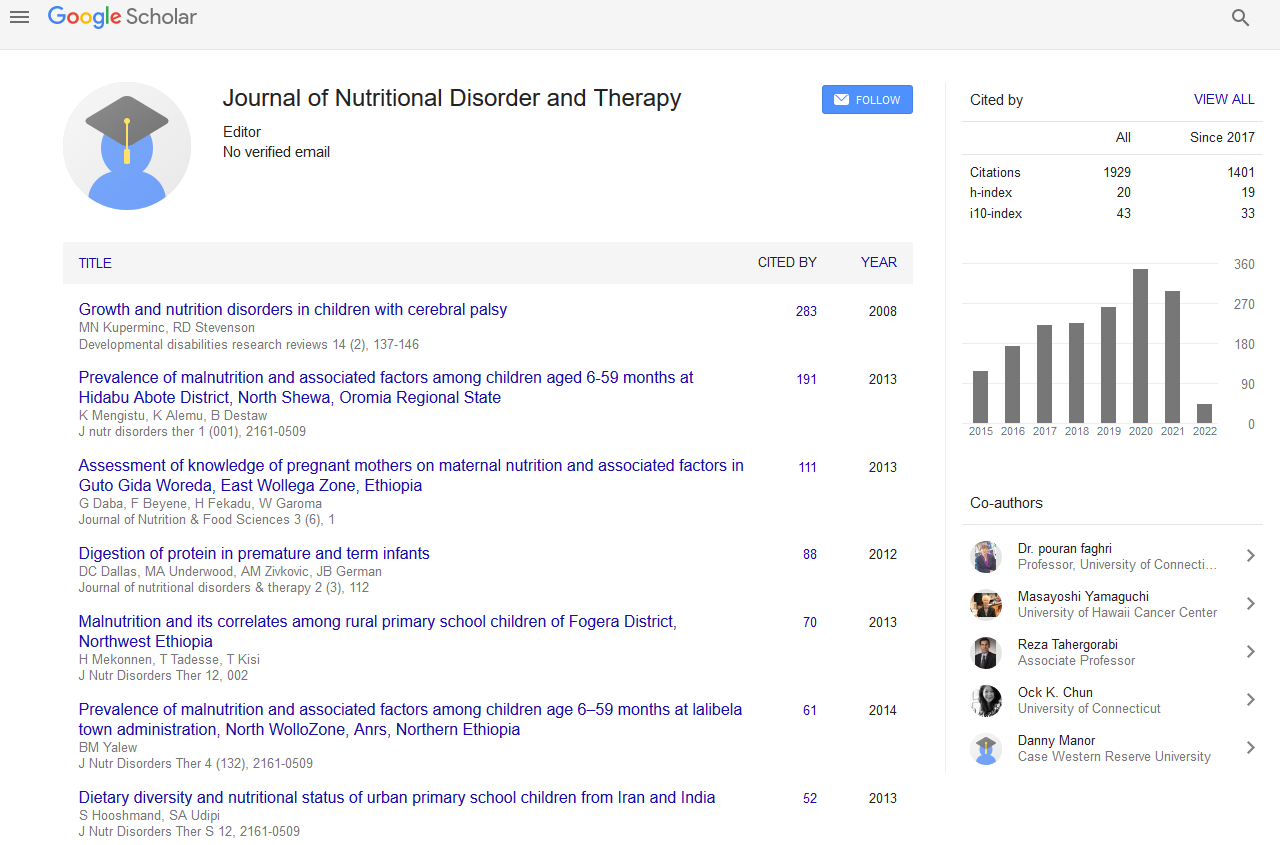Indexed In
- Open J Gate
- Genamics JournalSeek
- Academic Keys
- JournalTOCs
- Ulrich's Periodicals Directory
- RefSeek
- Hamdard University
- EBSCO A-Z
- OCLC- WorldCat
- Publons
- Geneva Foundation for Medical Education and Research
- Euro Pub
Useful Links
Share This Page
Journal Flyer

Open Access Journals
- Agri and Aquaculture
- Biochemistry
- Bioinformatics & Systems Biology
- Business & Management
- Chemistry
- Clinical Sciences
- Engineering
- Food & Nutrition
- General Science
- Genetics & Molecular Biology
- Immunology & Microbiology
- Medical Sciences
- Neuroscience & Psychology
- Nursing & Health Care
- Pharmaceutical Sciences
Abstract
Vitamin D Deficiency among Arab Community in North Israel: A Cross-Sectional Study
Z Armaly, A Jabbour, A Abd El Qader, M Alhaj, B Bisharat, Z Abassi, M Zaher and A Bowirrat
Objectives: Plethora of studies had described a global widespread vitamin D inadequacy. Studies have established that the prevalence of vitamin D deficiency is unexpectedly high in the Middle East. We aimed to determine the prevalence and the risk factors of vitamin D deficiency in Nazareth- Hospital Employees and Arab Football League.
Design: Population-based cross-sectional study was performed on 367 apparently healthy employees and 40 control football players. Serum levels of 25(OH)D, parathyroid hormone, calcium, phosphate and Body mass index were measured in summer. The LIAISON® 25 OH vitamin D assay uses immunoassay (CLIA) technology. Student’s t test, Pearson r and one way ANOVA were used.
Results: Unexpectedly vitamin D deficiency was diagnosed on the basis of laboratory values in 91% of the hospital employees and in 72.5% of the football players (25(OH)D <30 ng/ml). The frequencies of deficiency (<20 ng /ml), insufficiency (20–30 ng/ml), and sufficiency (>30 ng/ml), were (59%, 32% and 9%) for employees and (25%, 47.5% and 27.5%) for players respectively. PTH and BMI results were 60pg/ml and 26kg/m2 for the employees and 38pg/ ml and 23kg/m2 for the players respectively. Comparing vitamin D, PTH values among Hospital employees versus football players the levels of vitamin D were significantly lower among hospital employees, whereas, the levels of PTH were significantly higher [(p<0.001 (95% CI -8.27 to -2.469) and [(p<0.0001) 95% CI 10.15 to 23.9)], respectively. The hospital employees’ correlation between (PTH and vitamin 5 D) and (BMI and vitamin D) were (r = -0.17; 95% CI -0.273 to -0.061, p=0.002) and (r = -0.2; 95% CI -0.3 to -0.09, p<0.001) respectively.
Conclusion: Vitamin D deficiency is a global health problem even in sunny climate. Long term strategies to address this issue should include public education, national health policies through food fortification, and vitamin D supplementation. Reappraisal of the range of the vitamin D level worldwide is warranted, and the need for reliable cutoff criteria to describe vitamin D deficiency is required.


